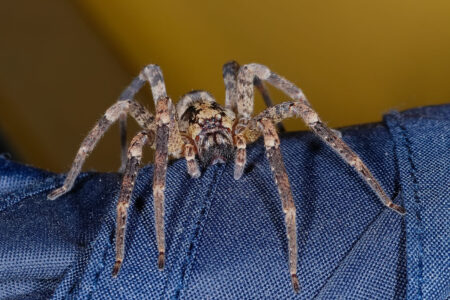Using Bacteria as Sniffer Dogs for Cancer
Adam Sidi Mabrouk is doing his PhD at Ariane Briegel's lab. Among other things he researches chemotaxis; how bacteria move to or from certain compounds. He sometimes uses electron microscopy, for which he wants to make a label. But he also found an unexpected use for chemotaxis.
Bacteria are incredibly fascinating organisms. Although they do not seem super complex, they are still able to survive and adapt to their environment. One of the ways they do this is by responding to their environment, which involves many complicated mechanisms. By investigating these mechanisms we can use bacteria in new ways, such as detecting neuroblastoma, a rare form of childhood cancer that occurs in children under the age of two. This is part of Adam Sidi Mabrouk's PhD research, which I interviewed him about.
To make the neuroblastoma diagnosis, two specific substances in the urine are examined: DHMA and VMA. This requires Liquid Chromatography Tandem Mass Spectrometry (LC-MS), a technique in which the physical characteristics of substances can be analyzed after they have been separated based on chromatography. LC-MS requires specialized laboratories and it can take up to a week before an accurate diagnosis can be made. This is of course very wearing for patients and their family which is why it is imperative to find a faster diagnosis technique.
E. coli is a commonly used bacterium in biology, so it was already known that it has a chemoreceptor, a sort of nose, for DHMA. If this substance is recognized the bacteria move towards it, just like sniffer dogs that respond to a certain odor. This way these bacteria can indicate whether the substance is present. VMA and DHMA are structurally very similar, so VMA can also be recognised.

However, to actually apply this technique in practice, the bacteria should be visible so their movement can be detected. This is possible with genetic modification. By allowing the bacteria to produce pigment, they are easier to see in large numbers. This way you can see whether the bacteria respond to DHMA and VMA. This could be applied in something like a COVID test, where instead of adding drops of a nose swab you would add drops of urine. When the colored bacteria then move to the top, their color becomes clearly visible, indicating that there is DHMA and VMA in the urine.
There is still a snag to this: you are working with living organisms that can cause diseases. Therefore they must not be able to survive outside the lab to prevent an outbreak in the hospital. A kill switch could be built in so that the bacteria will die if they are not in the specific lab conditions. As the bacteria reproduce, their DNA also changes slowly, potentially causing them to lose these kill switch and detection properties. That is why they must be regularly checked for their effectiveness.
Despite the challenges, this new diagnostic method has great potential. So why was this not thought of earlier? Sidi Mabrouk believes this is a matter of tunnel vision. Of course, doctors are not really concerned with bacterial chemotaxis, while chemotaxis researchers are not concerned with rare diseases. According to him, Ariane Briegel is also the reason why this research came about. “She is very interested in the application of fundamental biology, and I think it stemmed from that.”
It is also important that the bacteria remain mobile and move towards the substances. However, bacteria really enjoy clustering together, especially under stressful conditions. The pathways that take care of these so-called biofilm formation are perpendicular to those that cause mobile bacteria, so you only have one or the other. Therefore, it is very important not to put them in stressful situations. Unfortunately, a shortage of oxygen is also a stressful situation for these bacteria, and adding oxygen during such a test without introducing contamination is a difficult task.
Chemotaxis could also be used in other ways. For example, there was a project to find new painkillers using bacteria. A pain receptor is well conserved across all organisms, including bacteria. If we were to connect this pain receptor to a pathway that ensures chemotaxis, we could therefore quickly screen for new painkillers.
Bacteria have a bad image as dangerous organisms that make you sick, but fortunately they are increasingly seen as useful. Thus we continue the age old human tradition; using other living organisms in a new way to solve problems.







0 Comments
Add a comment